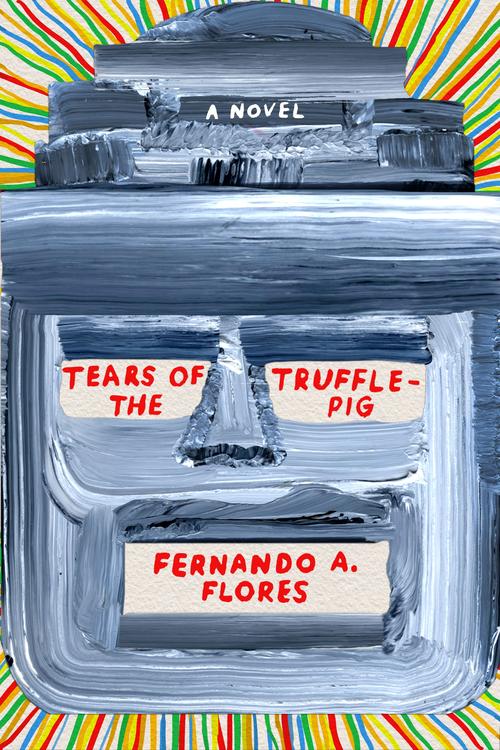Talking Frontera Fiction: A Conversation with Fernando A. Flores
Interviews
By Gabino Iglesias
The US-Mexico border sometimes seems like a parallel universe. In Fernando A. Flores’s Tears of the Trufflepig, it is. The novel takes place in a reimagined South Texas where there are two walls instead of one and a third border wall might be coming. It is a space of otherness and violence, of animal trafficking with creatures brought back from extinction and dealers selling human heads. It only gets weirder from there, but strangeness is only one of many elements. Tears of the Trufflepig is a vibrant novel packed with social commentary and action. More importantly, it is a narrative that explores a fiction that’s incredibly close to reality. Featuring folk legends, wealthy people devouring the flesh of strange animals, and two men who infiltrate an exotic, awful world, this novel is a breath of fresh air that demands to be read. I thoroughly enjoyed the book, and Flores’s humor and imagination left me curious: I wanted to know more about the writing of the book. I wanted to explore how his bilingualism ties into a larger movement of frontera fiction that includes my own work. He kindly answered my questions. Here’s what he had to say.

Gabino Iglesias: Authors are often asked, “Where did the idea for this book come from?” In the case of Tears of the Trufflepig, there’s a wealth of ideas, so exploring their origin would take up the whole interview. Instead, what I want to know is how they all came together, what the process of blending so many genres and concepts was like.
Fernando Flores: I approached the writing of this project more as a composer, trying to balance all these minimalist and maximalist concepts and narratives as I moved ahead, weaving everything together. It was an intense experience, because the first draft was written in a span of three months, but I learned a lot about working with a project, collaborating with it to create a story.
GI: The time for frontera fiction is now. Why this setting? What do you think makes the American Southwest and the border such a tremendous source of inspiration and narratives?
FF: There are a lot of narratives and stories that exist along the border that have never been depicted in our media or literature, and I am always interested to spiritually connect with all of this, maybe to engage with silence, art, the history of literature, and the unknown, to capture our unwritten stories, which have existed for centuries.
GI: Spanglish is a reality for many people. It gets the space and treatment it deserves in your book. Did you decide to inject it into the narrative on purpose or did it show up organically? Was there ever pushback from beta readers or editors?
FF: The Spanish, along with everything else in the book, came just naturally during the writing of the book, and I was lucky enough that in every step of the way to publication, I was never given any kind of pushback whatsoever from anybody. A lot of the dialogue, actually, I translated myself from the Spanish in my head while writing it, and sometimes characters say things in English a certain way that a Spanish speaker could identify.
GI: There are elements from a plethora of genres at play in Tears of the Trufflepig. How would you describe it to someone who has never read your work?
FF: Tears of the Trufflepig takes place in a parallel South Texas with two border walls, and a controversial third border wall about to be erected. Drugs, meanwhile, have become legalized. Years back, after a food shortage killed off a portion of the population, scientists are inspired to create a “filtering” technology to grow food, and then farm animals. Syndicates along the border hijack this technology to bring back extinct and rare animals, to either cook them for exotic, pricey dinner parties, show off, or use their feathers, fur, or to sell in the underground market. Our protagonist is Esteban Bellacosa, a man who suffered great loss during the food shortage. He is now trying to just make it in South Texas, finding and selling used farm/construction equipment for wealthy Mexican businessmen. One day, an investigative reporter named Paco Herbert sort of manipulates our protagonist to attend one of these dinner parties, where he encounters the legend of the Trufflepig, and things just keep happening from there.
GI: I couldn’t help feeling a connection between the filtering syndicates and the cartels. They both exist to satisfy a need. They both thrive thanks in part to consumers with money, mostly from north of the border. Was there a connection for you, or was I reading too much into it?
FF: A lot of the things in the book do mirror real-life circumstances, but none of it was ever intentional, nor was it meant to mirror any particular thing. I never chase a certain intention or theme when working on a project, but remain always open to going where the story naturally takes me, like it’s a growing organism I’m trying to make sure makes it out there.
GI: I found the horror elements surprising but also incredibly enjoyable. I write and consume horror constantly. Did you ever think strange apparitions, extreme violence, and a man vomiting a huge tapeworm into a pot of broth would be a turnoff for readers or publishers?
FF: Thinking about the border here, I believe that every genre that has ever existed exists at once along the border. Along the border it’s a western, a crime story, noir, historical fiction, romantic comedy, tragic drama, speculative fiction, all in just one freaking day. Even though I never think about genre until way after a project is finished, and even though I don’t really believe in genres (side note: These are borders we create for ourselves—“This is literature, this is not”; “This is genre, this is not.” Side-side note: What is the genre of separating kids from their parents and locking them in cages?), I am the kind of reader who is influenced by every kind of literature there is. To hear someone call something in the book “horror” astonishes me, but at the same time you’re right—it is horror! I don’t think I could have been aware of this while writing it. To be honest, I’m still kind of shocked by a lot of the things in the book.
GI: There is a powerful passage where you talk about poverty as something that is “visceral, universal.” Only the filtering syndicates and those who keep them in business have money in this story. In that regard, I think it makes all shady dealings understandable, maybe excusable. Did you set out to create “bad” characters that are just hustling, trying to survive, or did that just happen because you were mirroring life on the border?
FF: I was interested in having a main character whose life had changed drastically just like the border had—a character that in a way embodied the past and present tragedies along South Texas. I never thought of characters as good or bad in this project—I feel that these lives were introduced to me, and I tried to represent them on the page as best I could with my abilities.
GI: Gastronomy, both real and not, permeates the narrative. What made you focus on it? How did you manage to keep things so weird and interesting?
FF: One of my favorite books is How to Cook a Wolf, by MFK Fisher, so perhaps some of the culinary material in the book is inspired by it. Perhaps there’s something of the cookbook also in this book. I’m always full of energy whenever I am writing anything, so perhaps it comes through, and I’m grateful you feel these things in it, too.
GI: From MacArthur to Reinahermosa, your border is slightly fictionalized, but places are identifiable if readers are paying attention. Was that just part of creating fiction, or did you need entirely new places to house your story?
FF: My approach was to write about South Texas in an indirect way, so a lot of the geography is slightly fictionalized. In a way I wanted to write the story South Texas would imagine for itself, if it were to have a bad dream. Almost like The Wizard of Oz is perhaps the story of Kansas imagining itself.
GI: Every border story adds something to the discussion, enriches the conversation somehow. Besides its entertainment value, what do you hope readers take away from Tears of the Trufflepig?
FF: I hope people make room for the Trufflepig in their lives (and dreams).
Gabino Iglesias is a writer, professor, and book reviewer living in Austin, Texas. He is the author of Zero Saints and Coyote Songs. You can find him on Twitter @Gabino_Iglesias.
More Interviews

